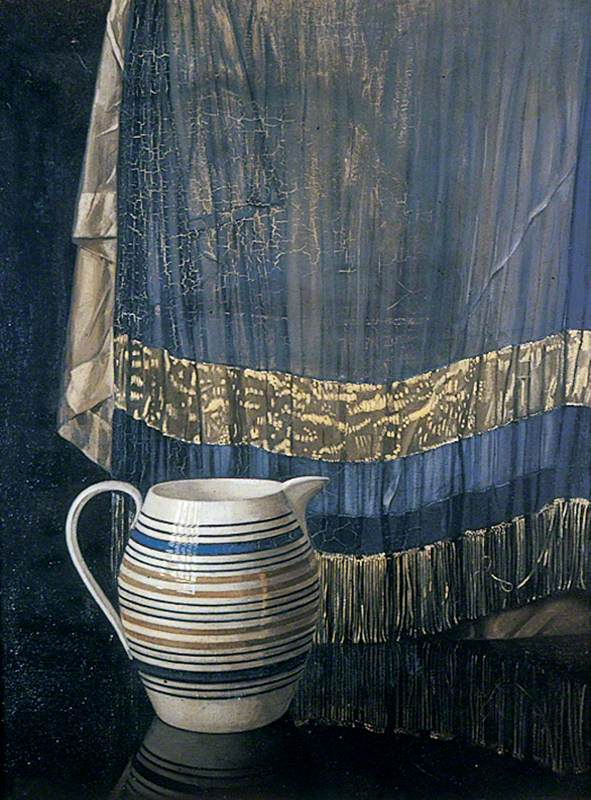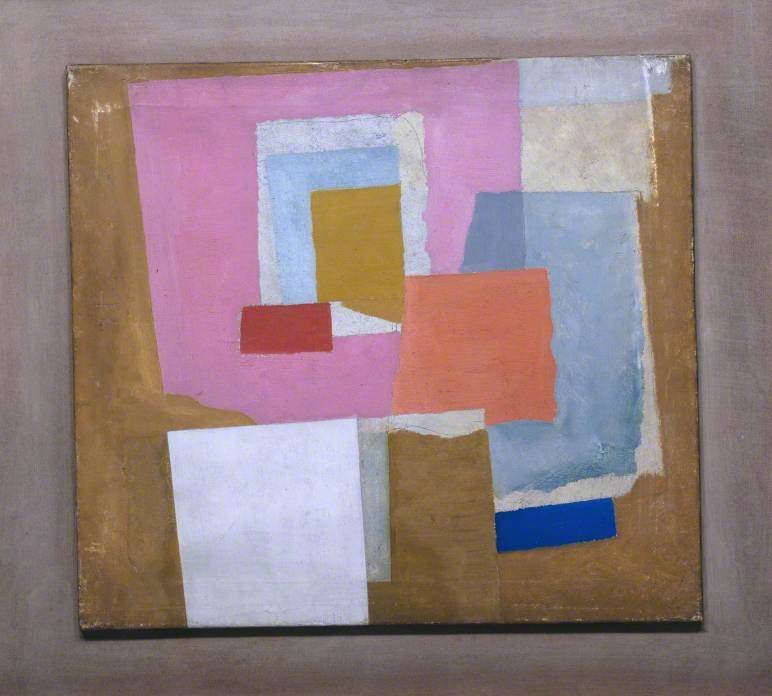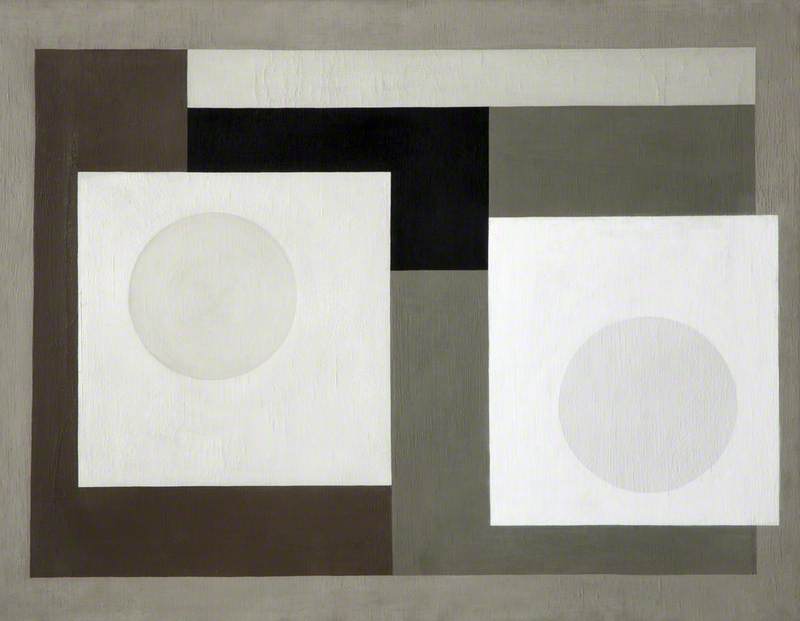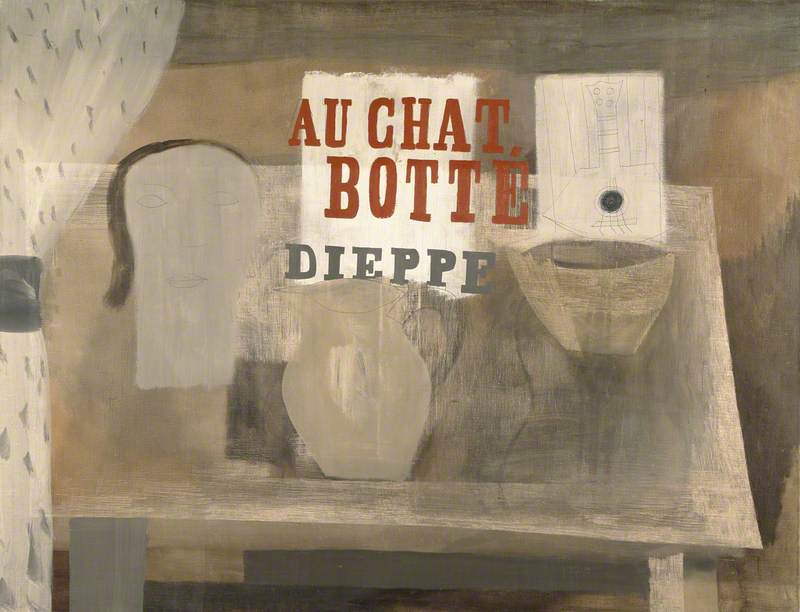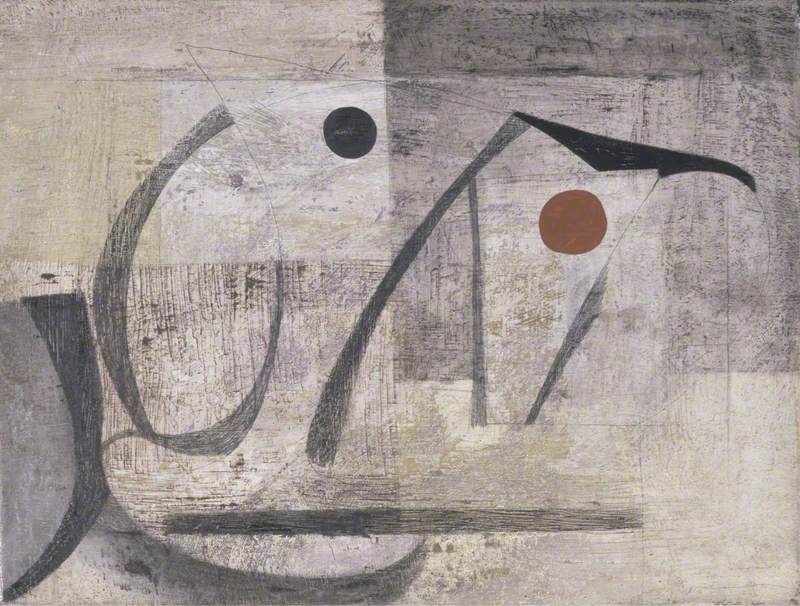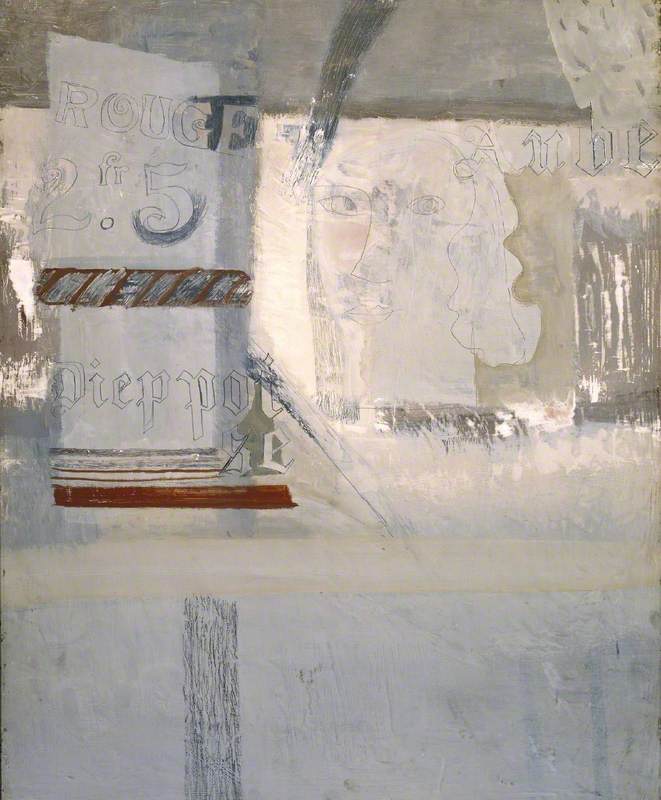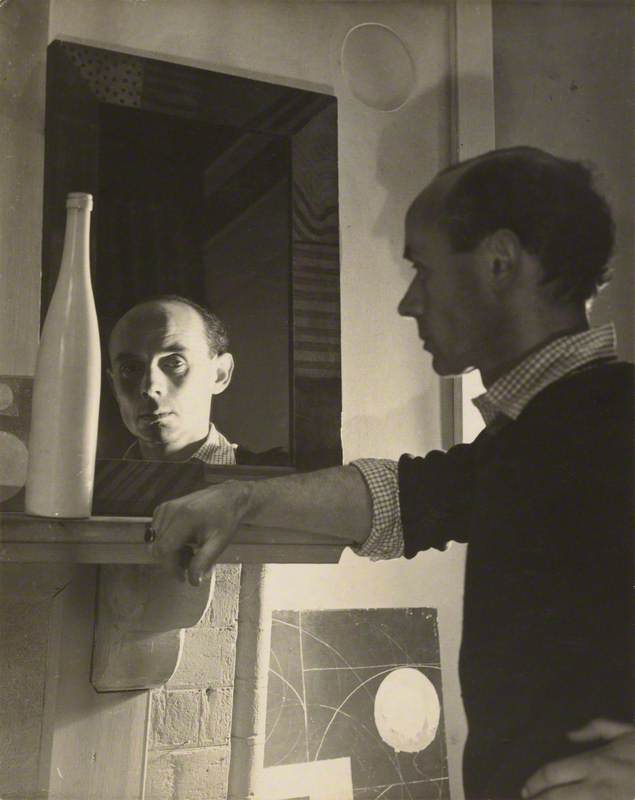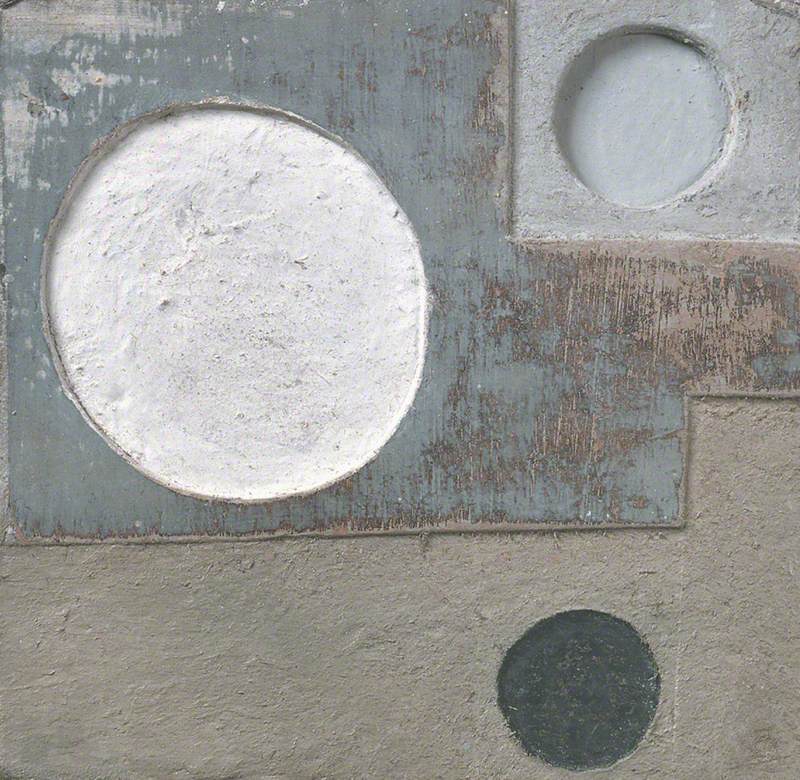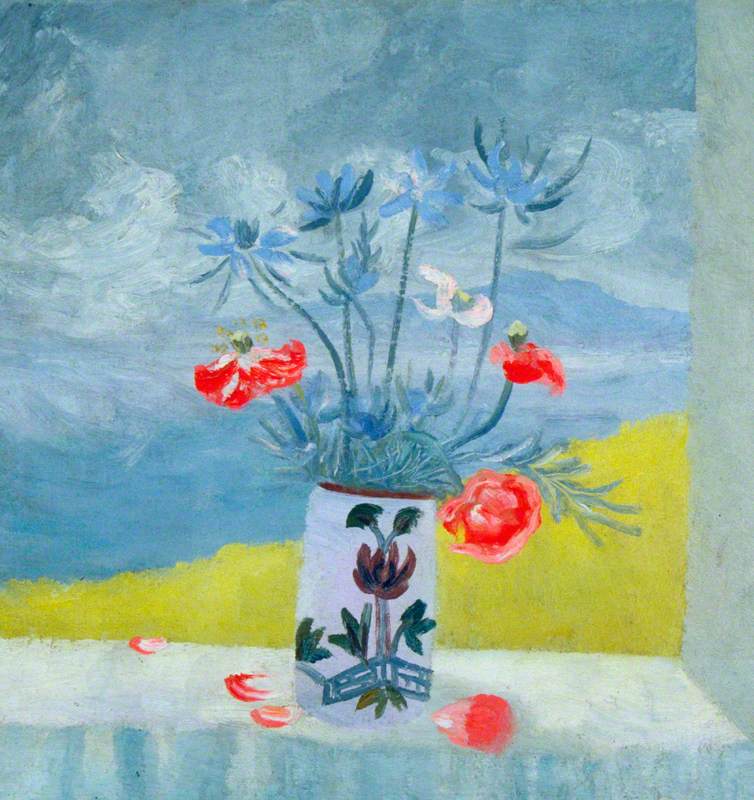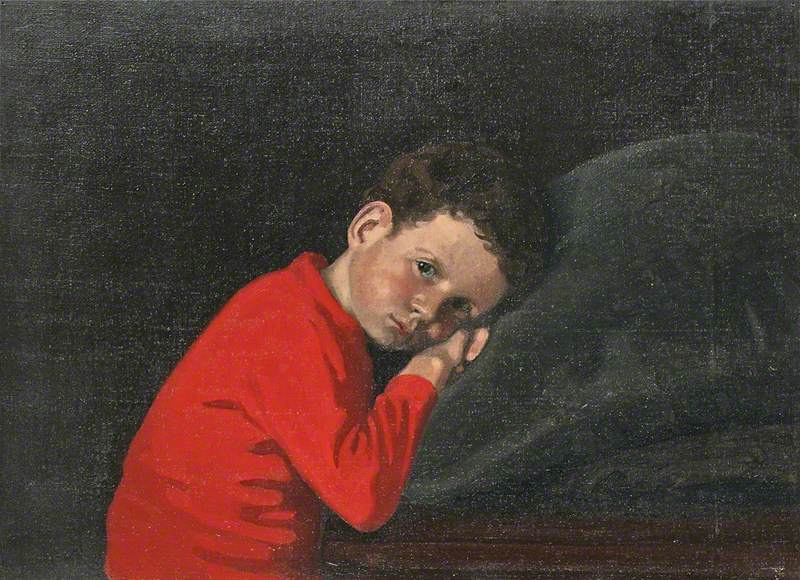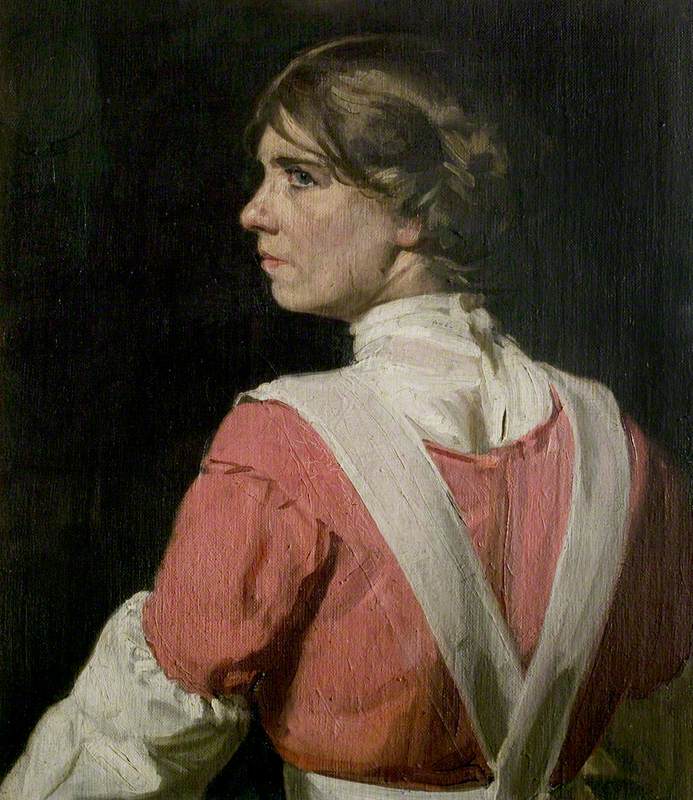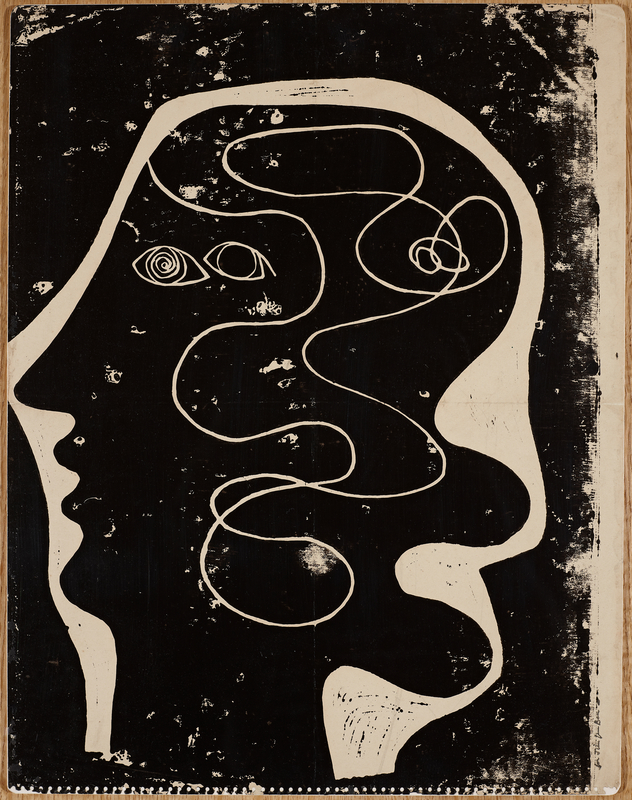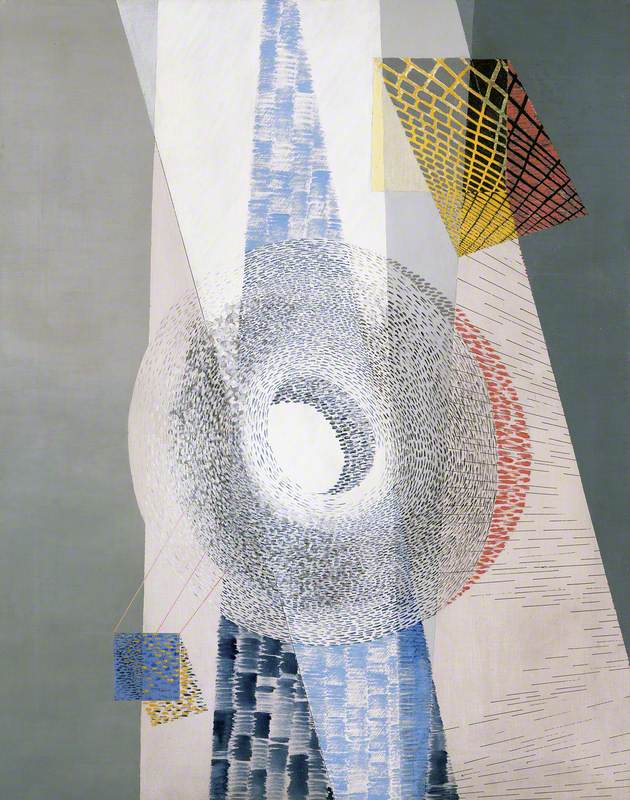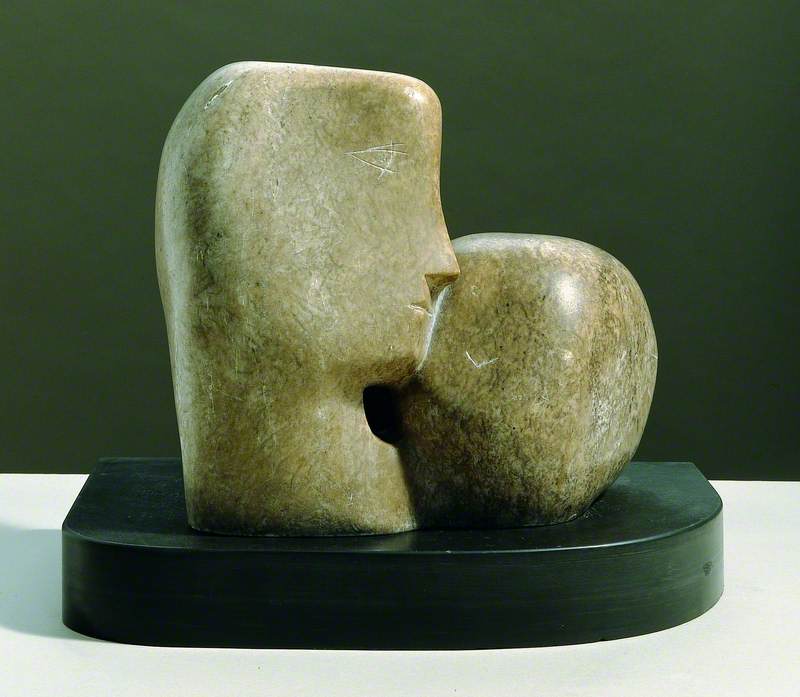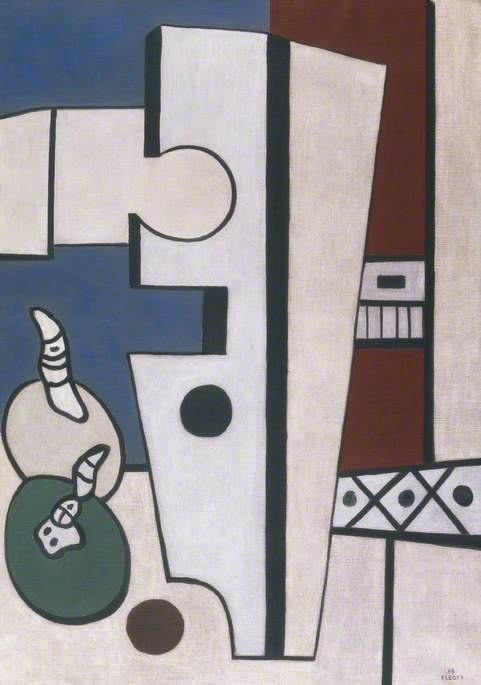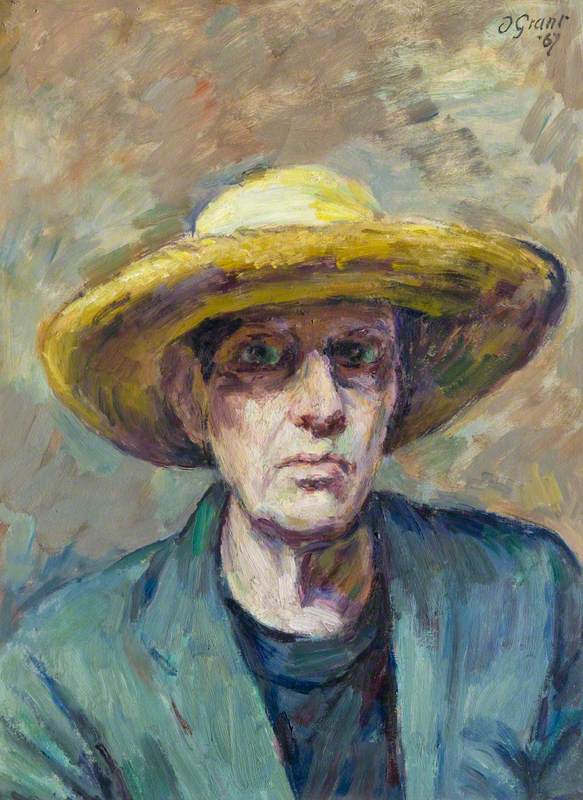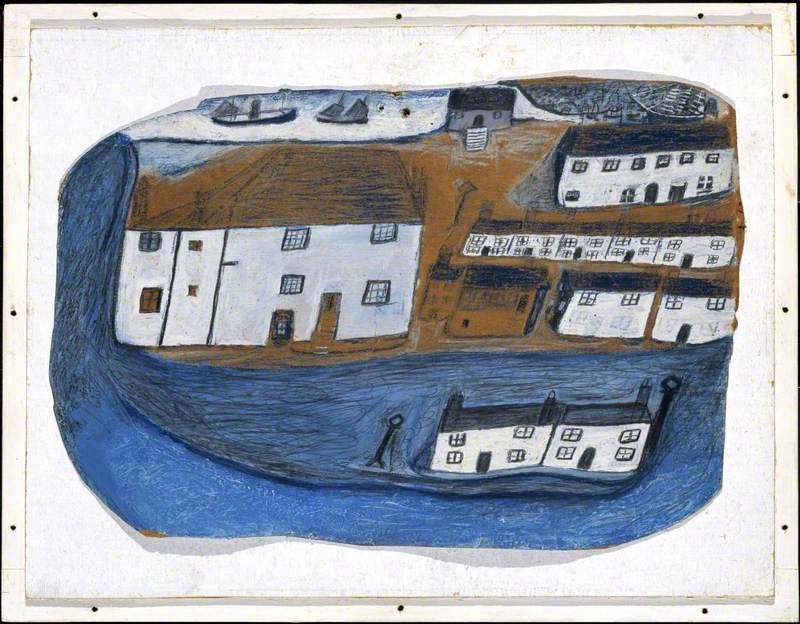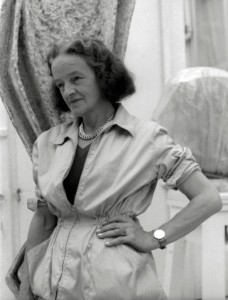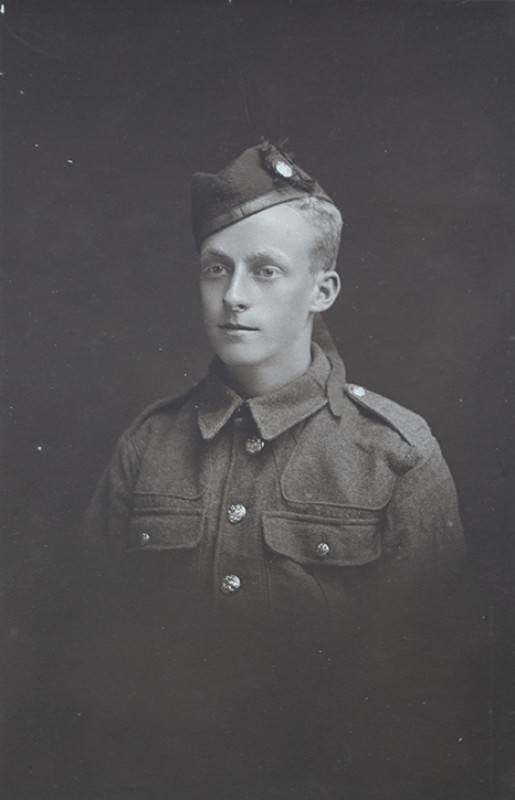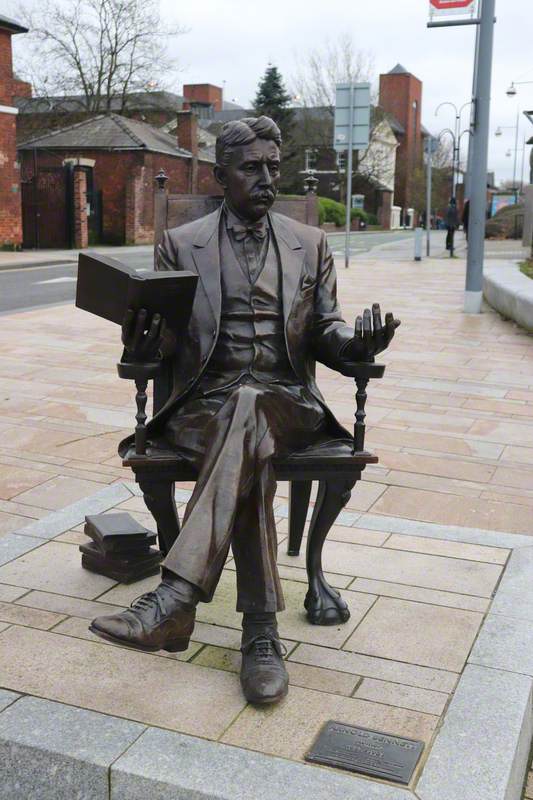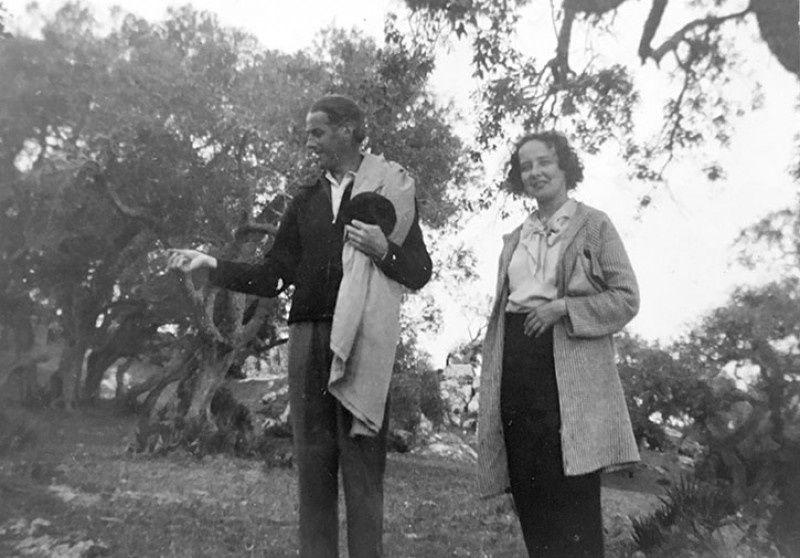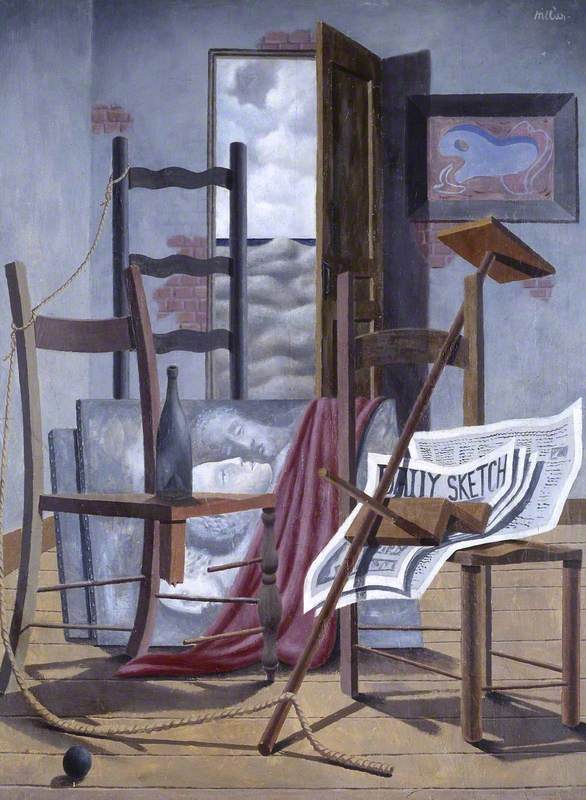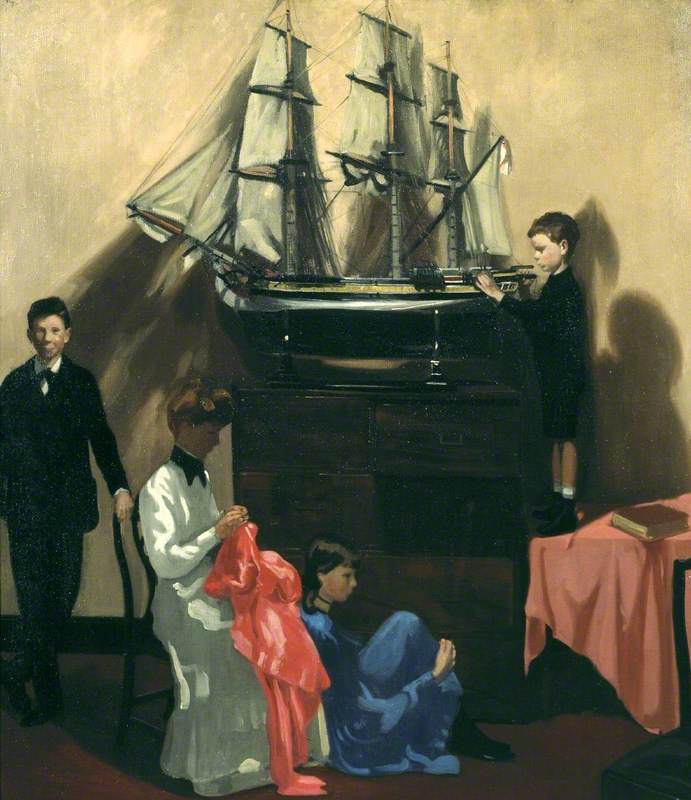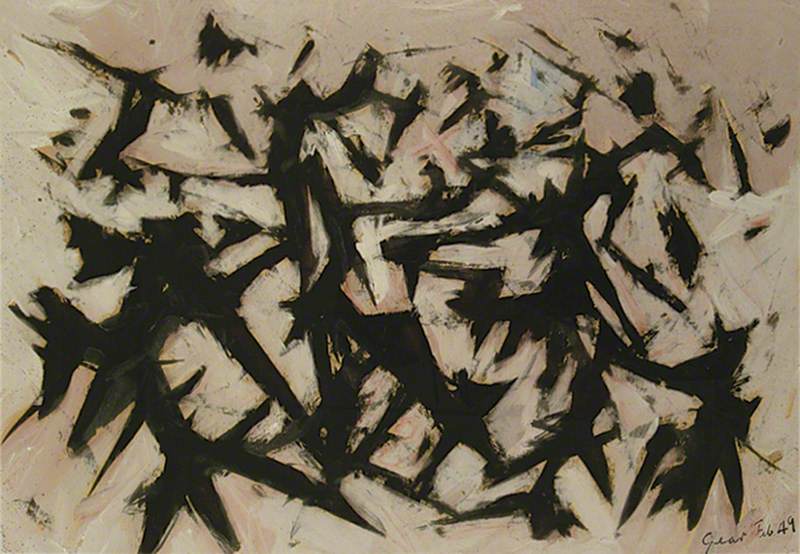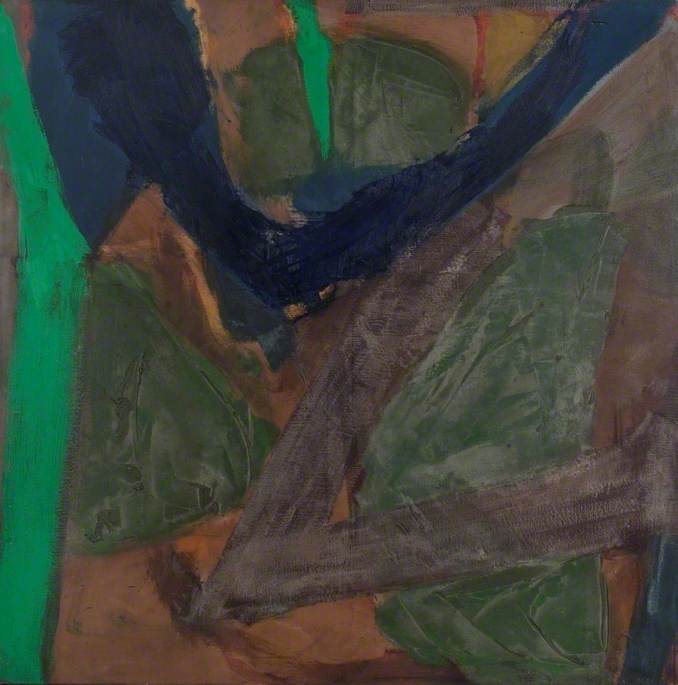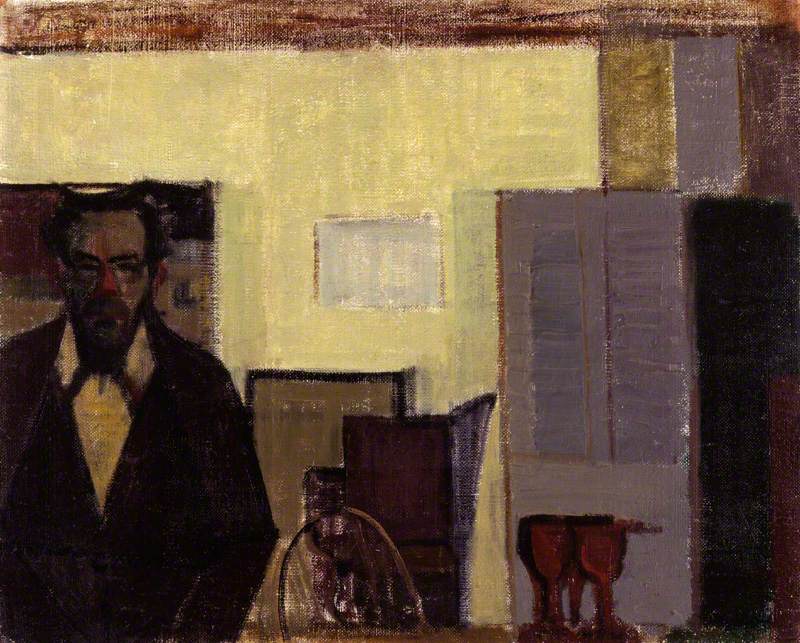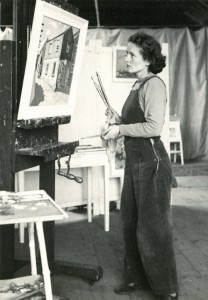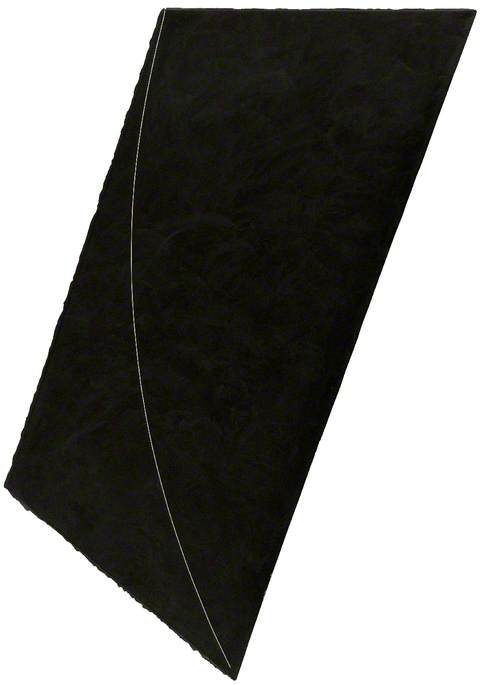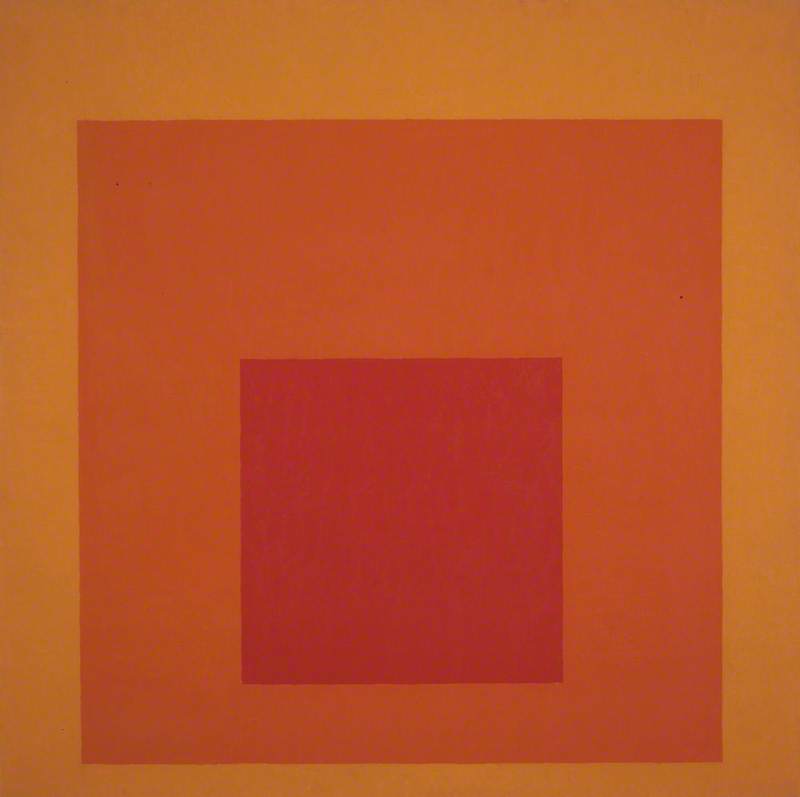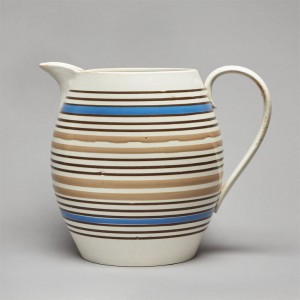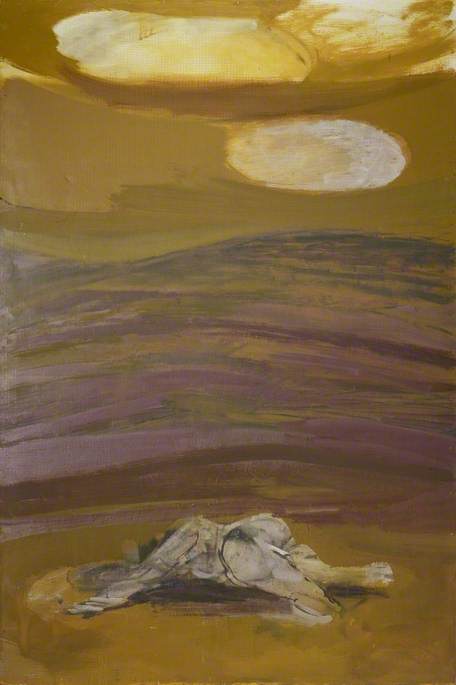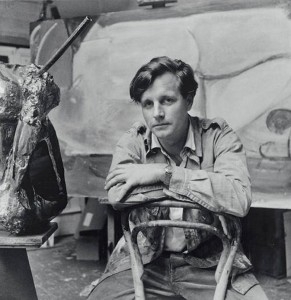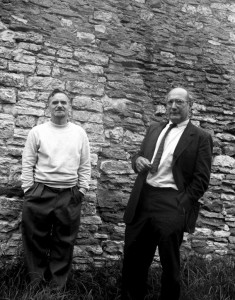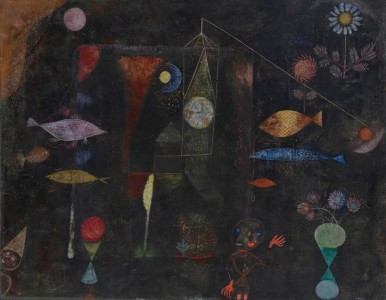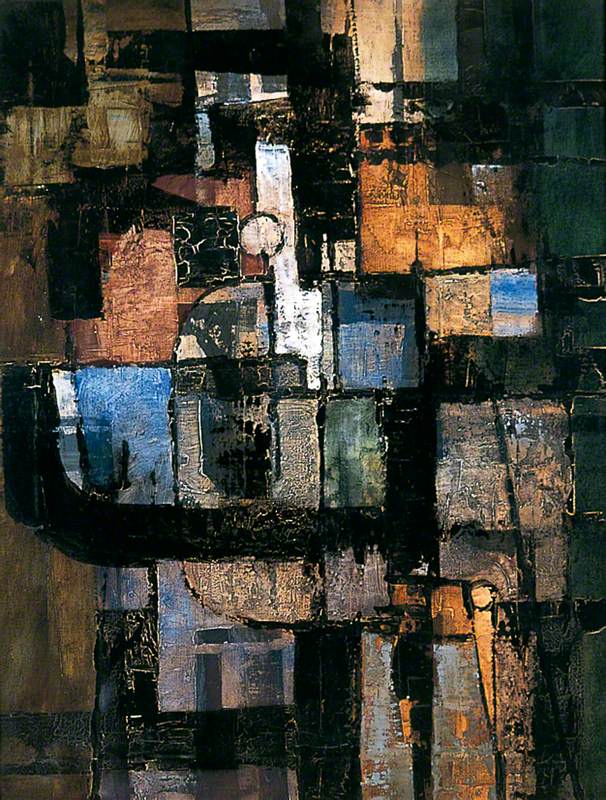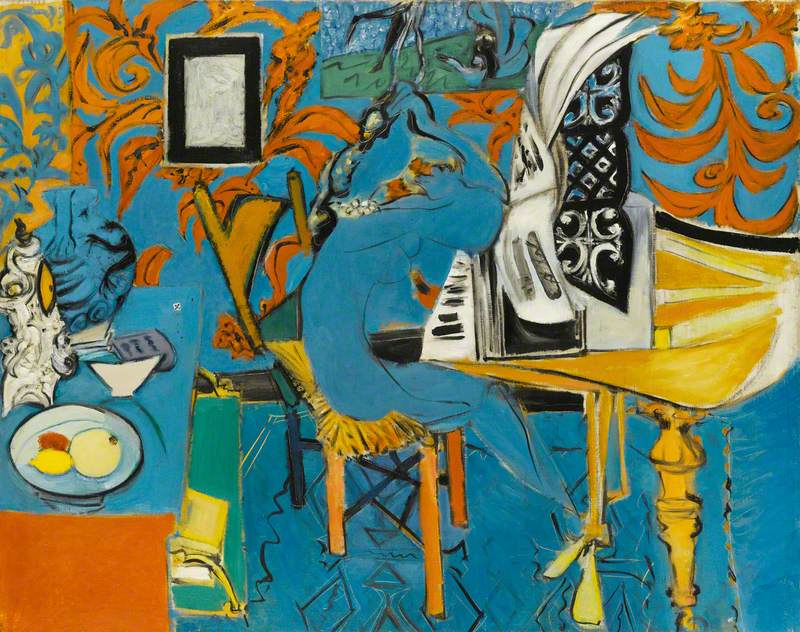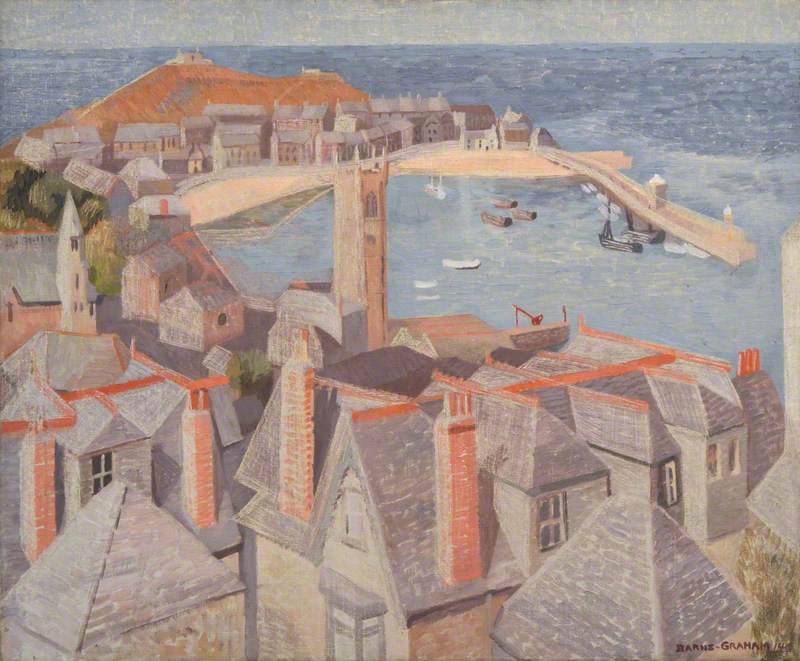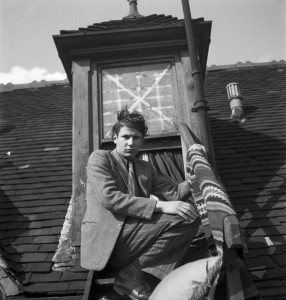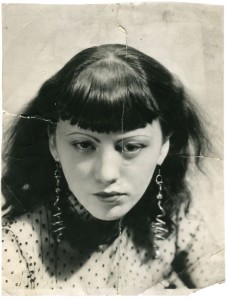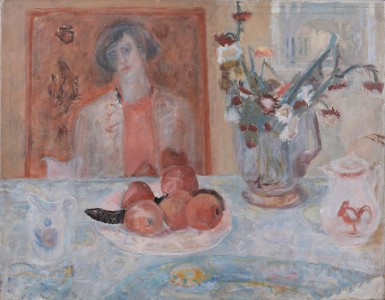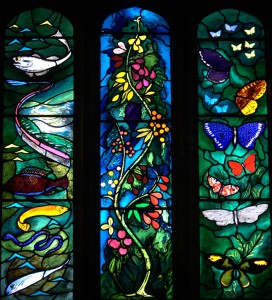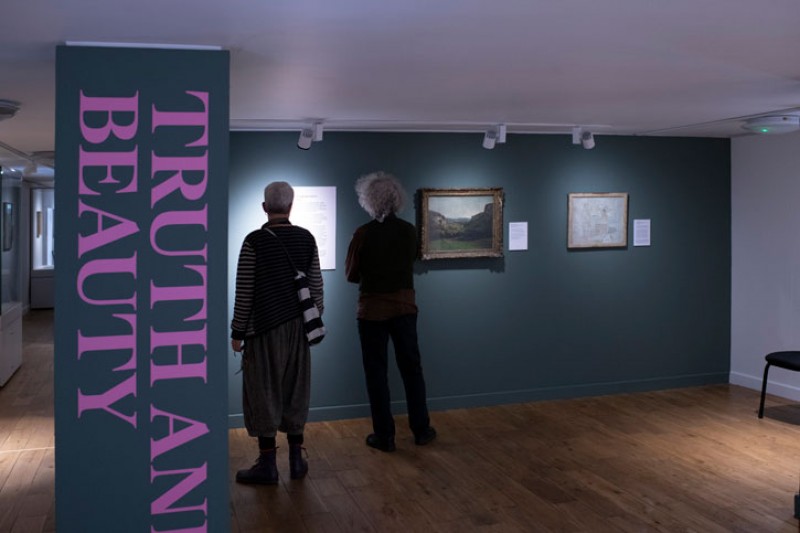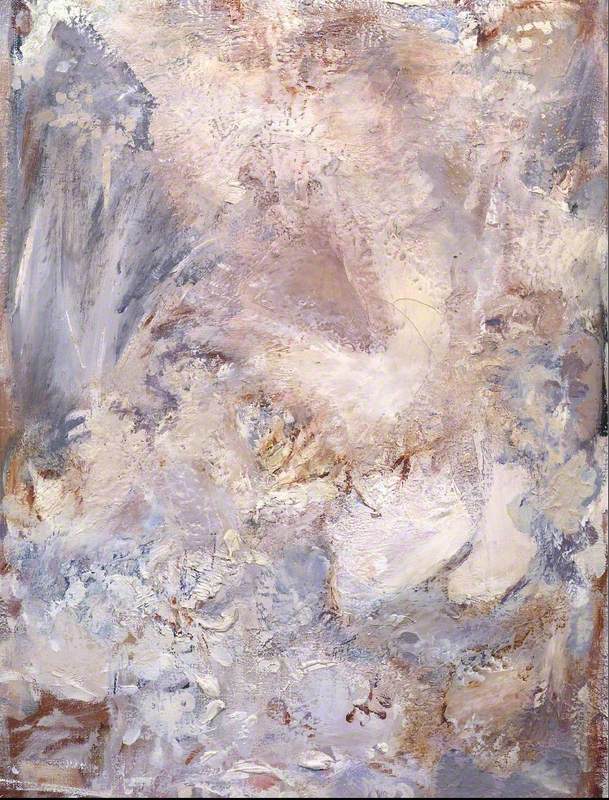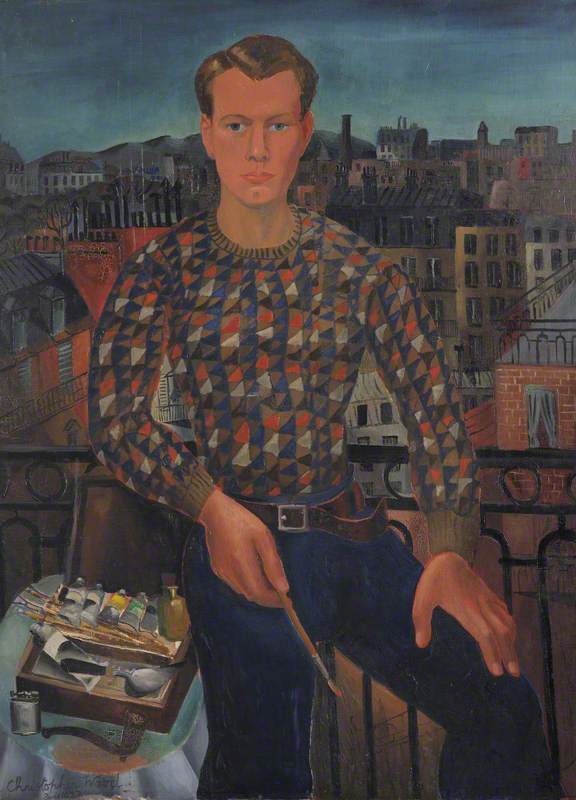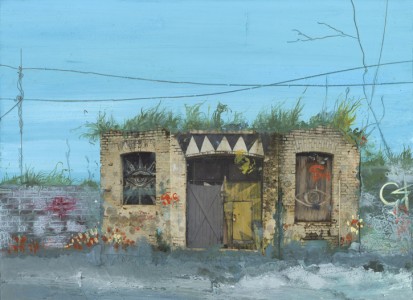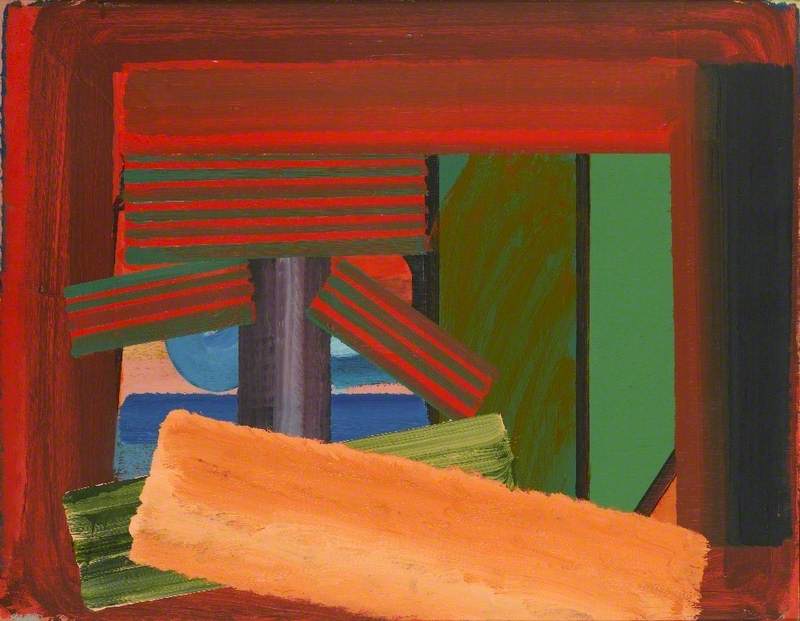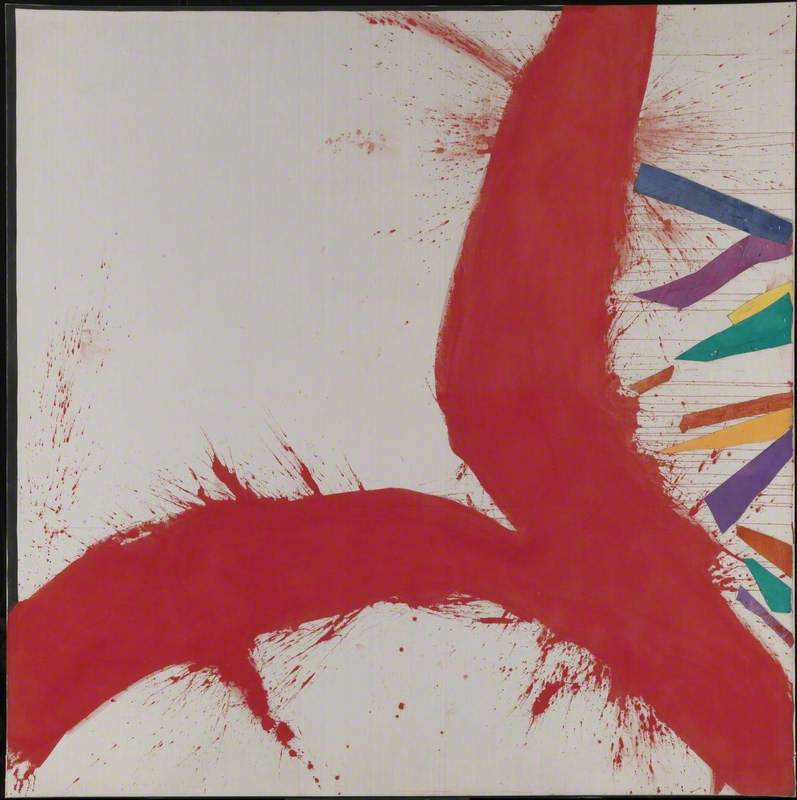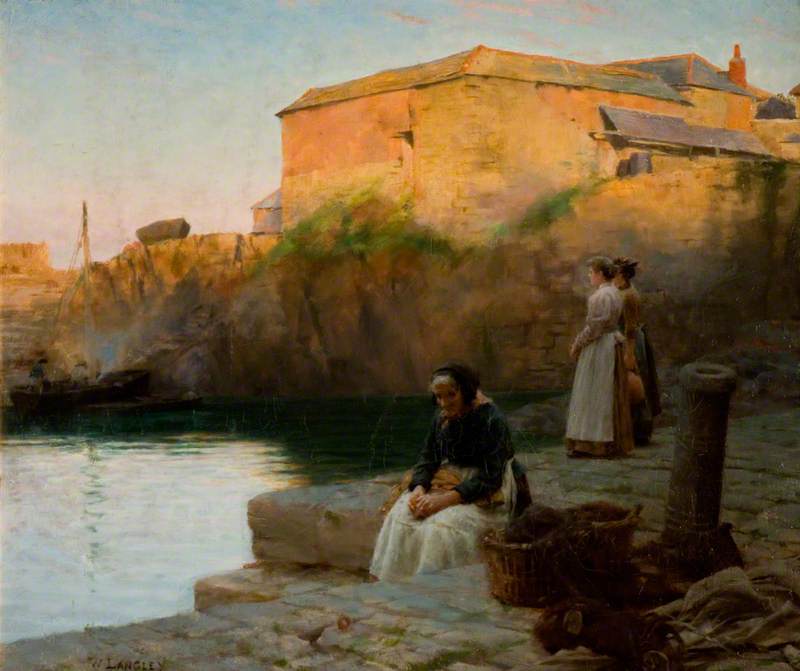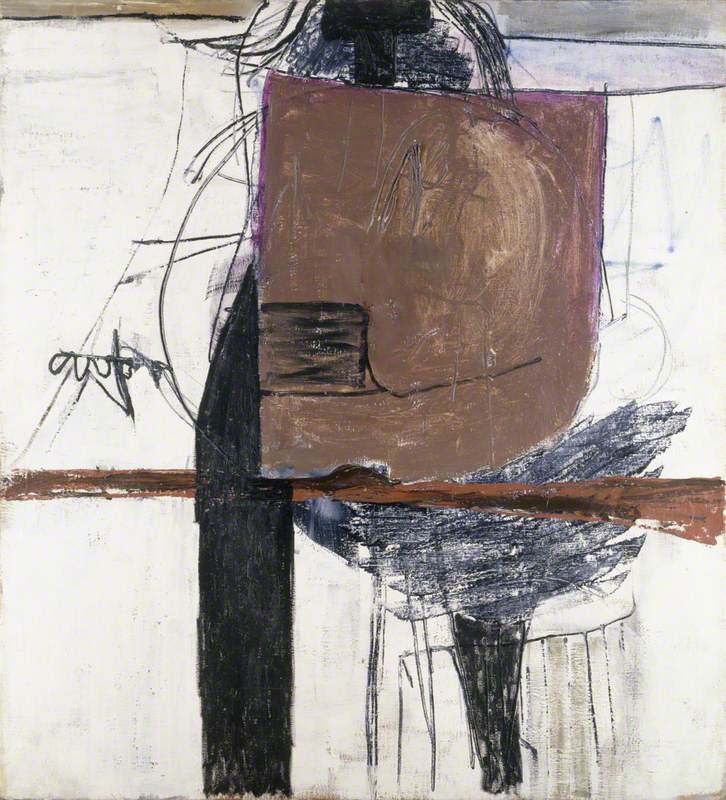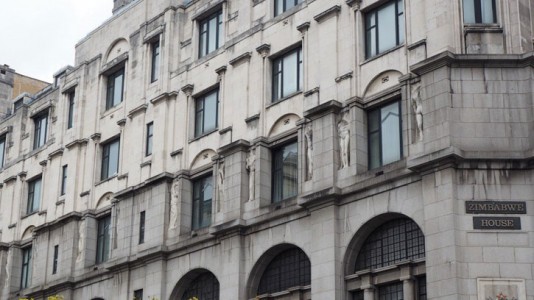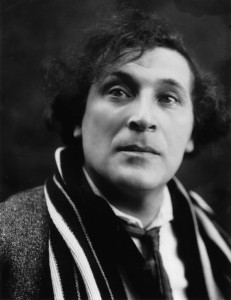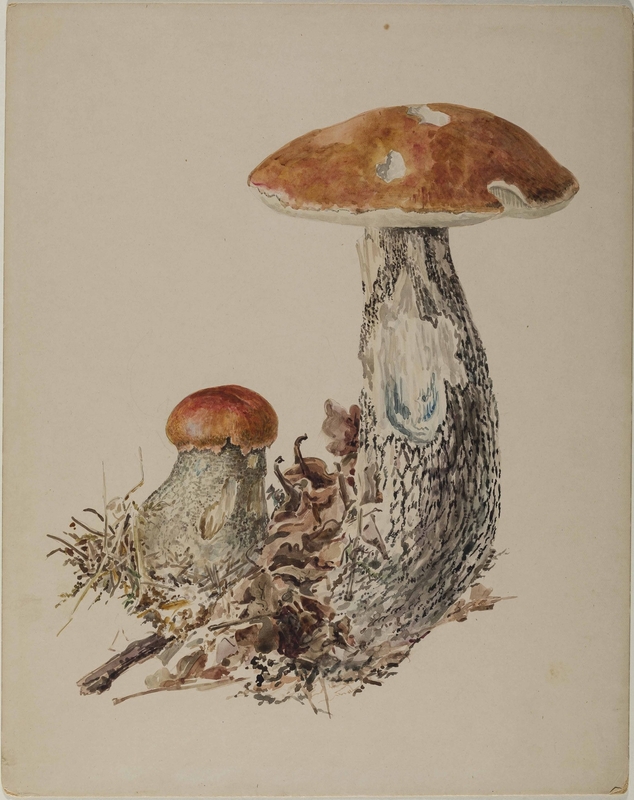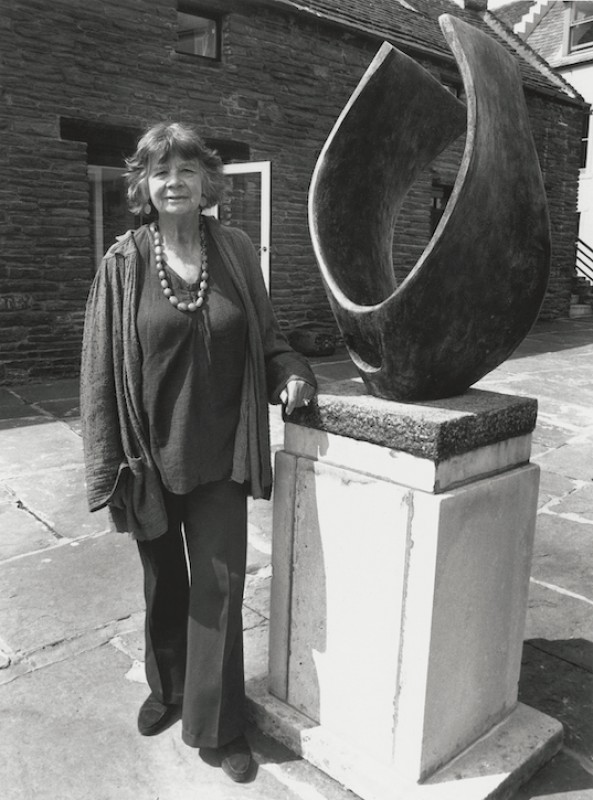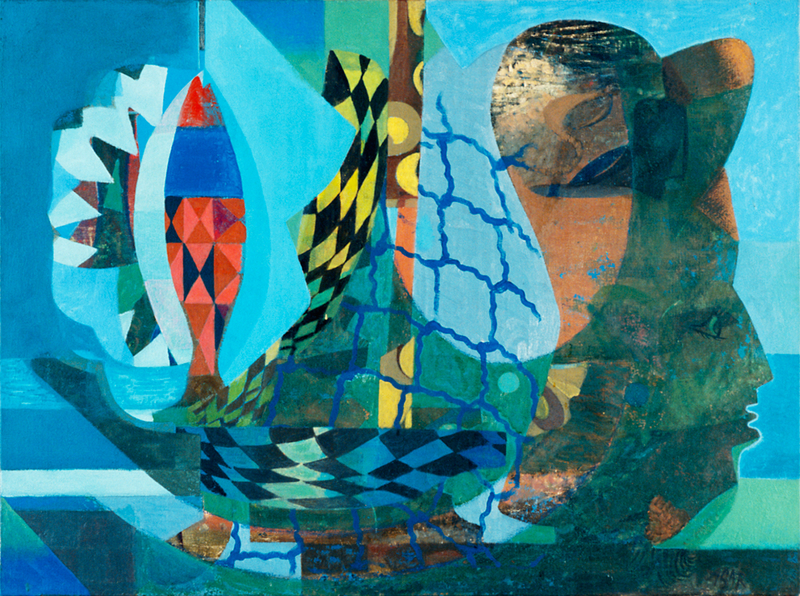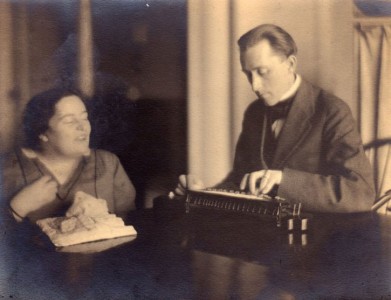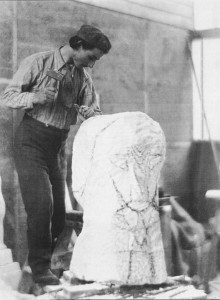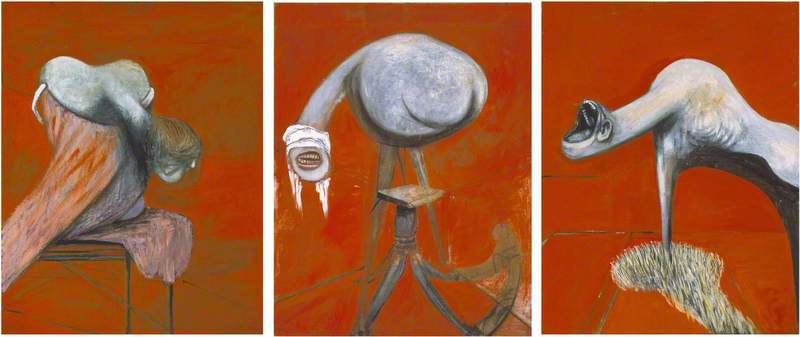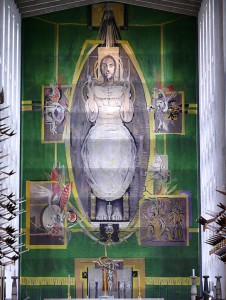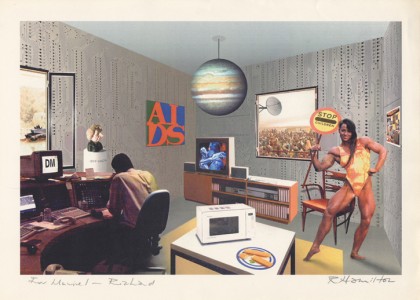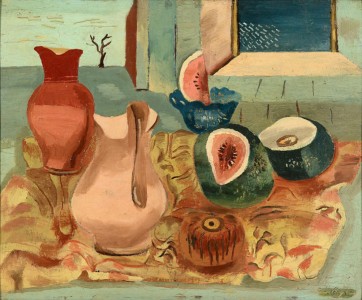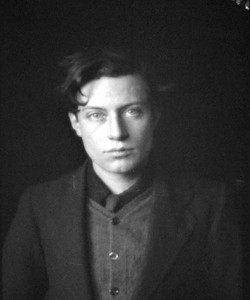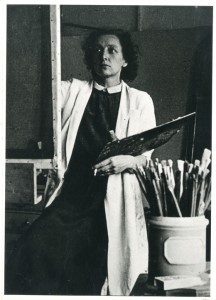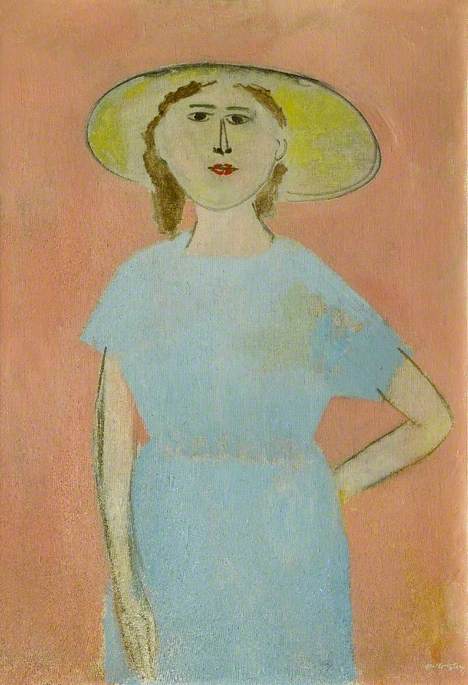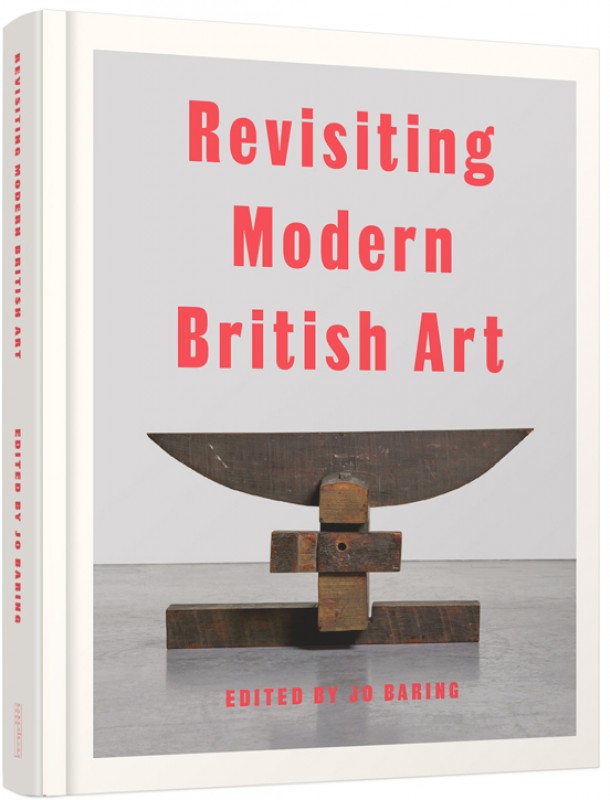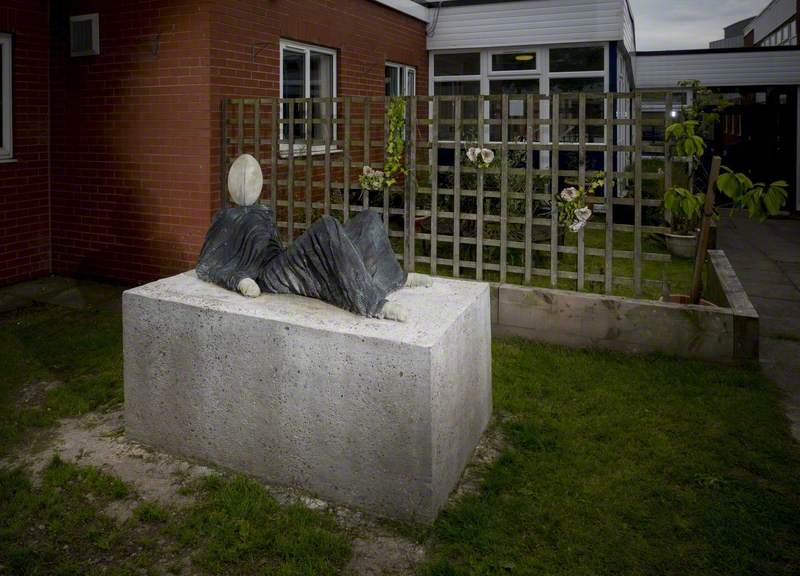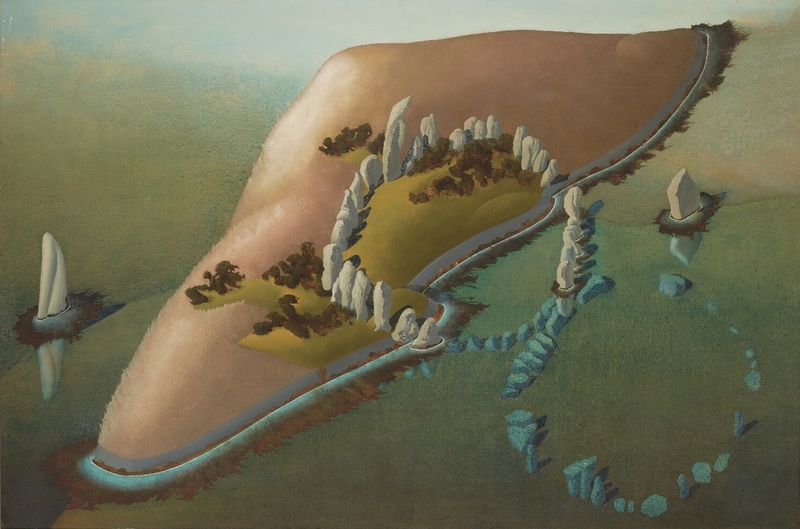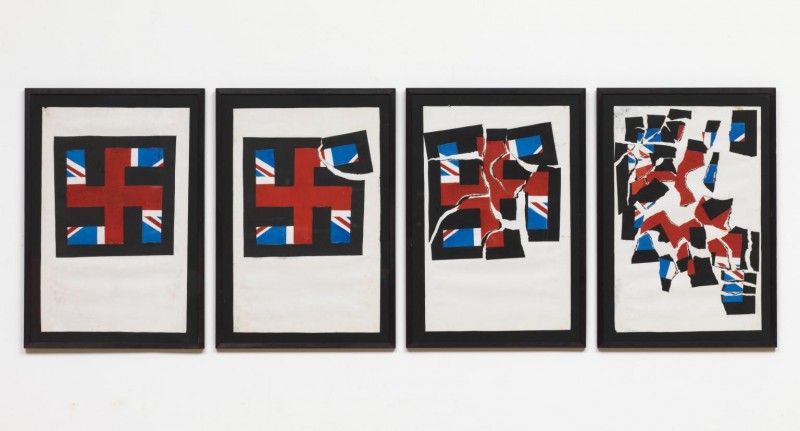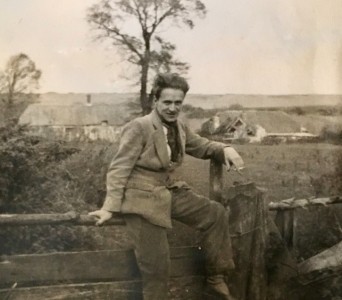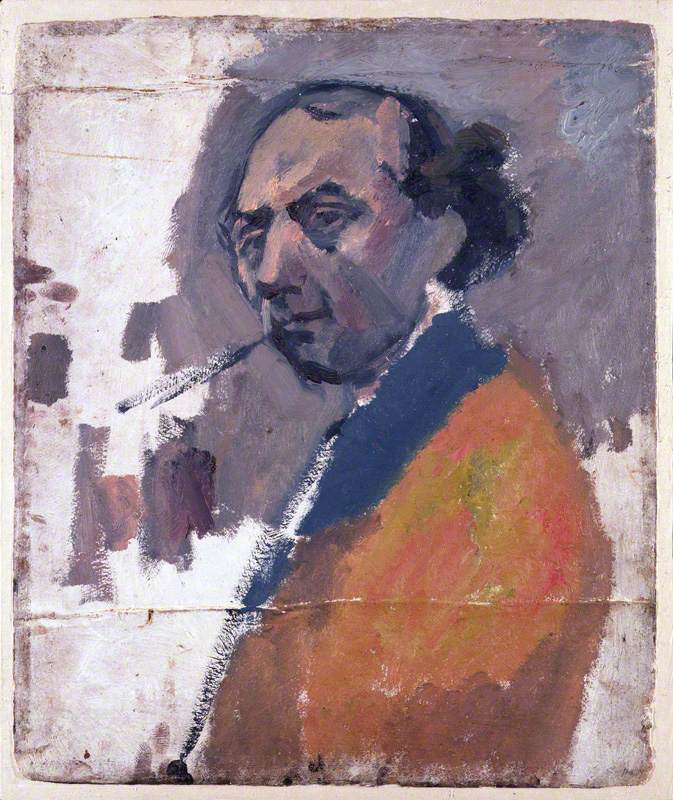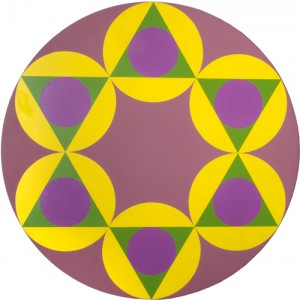As a child Ben Nicholson loved the 'spotted mugs & striped jugs' his father collected. After toying with the idea of being a poet, Ben decided to become a painter, like his parents – William Nicholson and Mabel Nicholson, née Pryde. One of his father's stripy jugs caught his eye and so his father gave it to him. It appears in a few of his early works and he clearly enjoyed the strips of reflected light against the horizontal stripes.
Less than ten years later, Ben turned towards abstraction. He made his first entirely abstract work, 1924 (first abstract painting, Chelsea), in his Chelsea studio, where he often stayed, while his wife, painter Winifred Nicholson, preferred to work in their farmhouse, Bankshead, in Cumberland.
Ben liked the hustle and bustle of the King's Road, the cinemas and the buses, while Winifred enjoyed peace. He told Winifred that this painting was based on a collage. The brushstrokes look like the edges of torn paper and the blue block appears translucent, like tissue paper, creating a deeper blue where it overlaps with the magenta pink, one of Winifred's favourite colours.
In her memoir, Unknown Colour, Winifred later explained that she wanted her paintings to 'draw down' colour so they could act as a lamp and a window. The overlaps of life and art are clear: a painting by Winifred from the following year, The King's Road, includes the same pink and a striped jug. Ben worked on the white square at the bottom left of his painting after he had finished the rest, and then felt that it was out of step. It does look at odds with the rest, a bit like a signal for his white reliefs to come.
Spots and stripes and their reflections continued to play a part in Ben's work throughout the 1930s after he met and fell in love with Barbara Hepworth in 1931. Ben and Barbara went to Dieppe, a favourite haunt for artists in August 1932. A shoe shop called 'Au Chat Botté' (Puss in Boots), on the Grande rue caught Ben's eye. He told Winifred that he painted for three days without stopping when he got back to London. The result was 1932 (Au Chat Botté) in which he replaced the footwear with a jug, a bowl and a bust of Barbara. His own French, he said, was a little 'mysterious' and so the words themselves took on an abstract quality.
He enjoyed the play of reflections: the red lettering on the glass created one plane, and then what was behind him, another plane, and then the actual objects through the window (performing 'a kind of ballet') created a third plane. Altogether it seemed to create a new imaginary place to live – the curtain on the left is the finishing touch for this fictional space. He told a friend later that he liked the idea of the reflection being more real than the thing reflected. This picture, he said, was a precursor to his abstract reliefs. The incised outline of a guitar or mandolin on a white box in the right-hand corner is marked with a distinct soundhole.
1932–33 (musical instruments)
1933 (?)
Ben Nicholson (1894–1982) 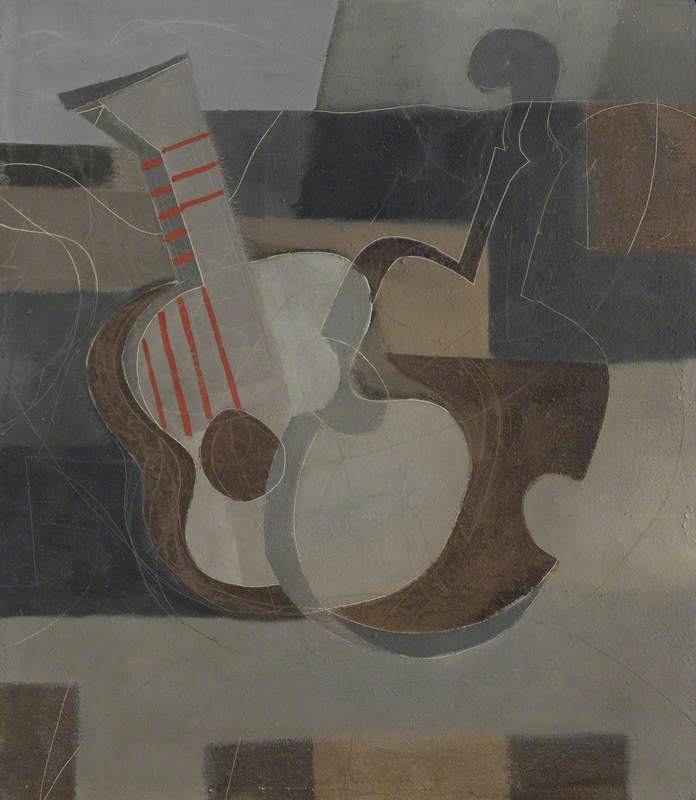
These musical spots appear in many of his works in these years, for example, 1932–33 (musical instruments), which somehow seem to morph into dancing human forms.
And in another work by Ben, inspired by the trip to Dieppe, 1932 (Auberge de la Sole Dieppoise), Hepworth's pencilled reflection stares out through the reflected sunshine.
The 'roughness' and the use of plaster on plywood was another step towards his reliefs of the following year. The stripy bar echoes the stripy French pencils both Ben and Barbara liked very much: they reminded Barbara of barbers' poles. Ben holds one in the photograph of his hands taken for the Unit One catalogue in 1934.
Both artists were fond of spotty things. He scattered spotted handkerchiefs for her to find in her bed when he went away and they reminded her of the pebbles on the beach in Norfolk, where they first fell in love. Barbara's sister sent her some spotty material, which she used as a coat lining, and Barbara sent Ben a spotty scarf for Christmas. And together Ben and Barbara designed linocuts for textiles, one of which was a series of spots in squares that was later printed onto cotton fabric by Ben's sister Nancy, at Poulk Press.
In December 1933 Ben had a breakthrough with his work. He was in Paris with Winifred and their three children, and he spent the day making 'an amusing thing'. When his children came into the studio at the end of the day they had fun rolling a marble around it. This was Ben's first relief, December 1933 (first completed relief). Many others would follow.
He later wrote that he had been incising some plaster material on a board and a piece came away where two lines met, and rather than feel frustrated, he became fascinated by the split level. Barbara was delighted that he had begun 'carving out' and although she wished she had been with him when it happened, she sent him razor blades from London so he could keep going.
A year earlier Barbara had pierced a hole through a small pink alabaster sculpture – Pierced Form (destroyed in the war) – which gave her intense pleasure, unlike anything she had experienced making figurative sculptures. And with those two moments, the story of abstract art in Britain was transformed.
Caroline Maclean, author of Circles and Squares: The Lives and Art of the Hampstead Modernists
